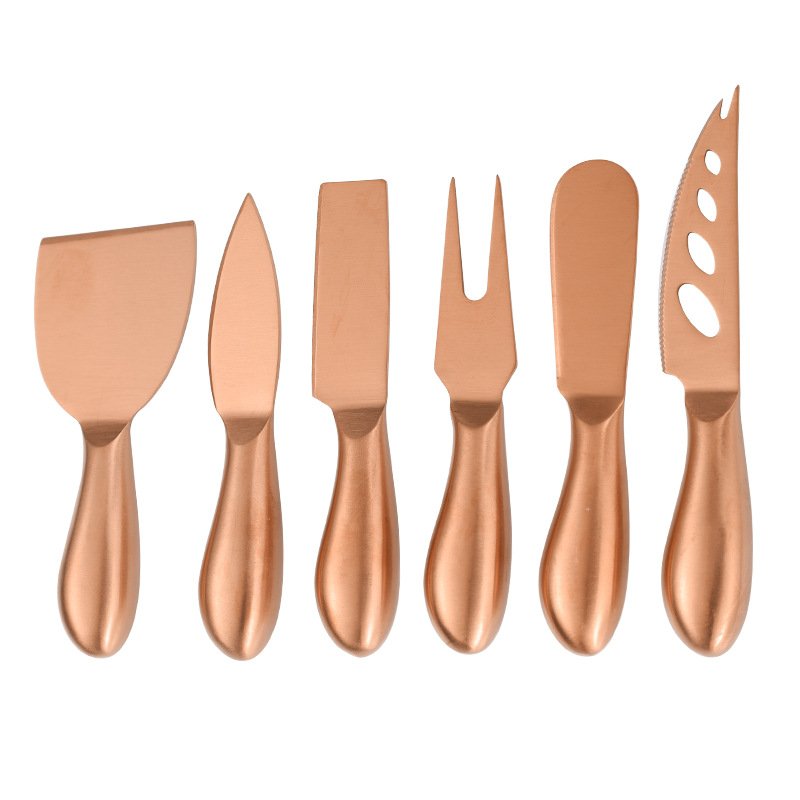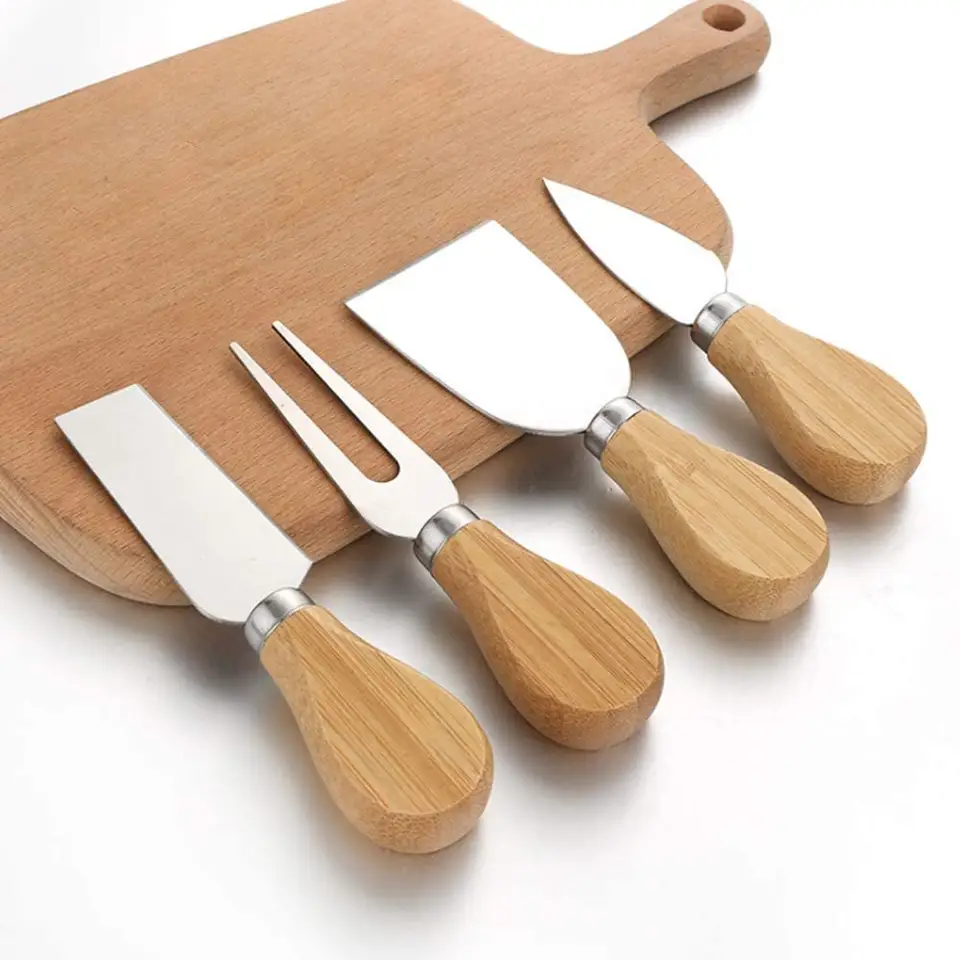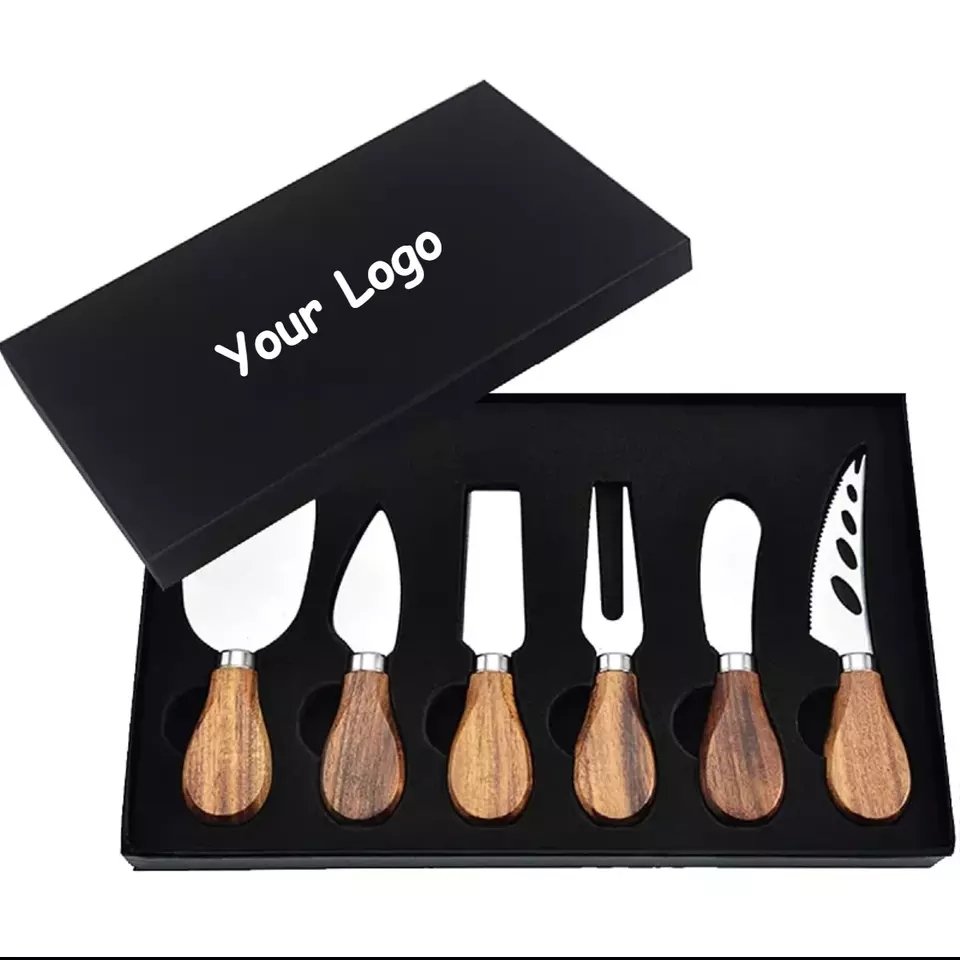Ever bought stainless steel cutlery that rusted quickly? Poor-quality cutlery is frustrating and wastes your money, but identifying good quality is easier than you think.
High-quality stainless steel cutlery has clear grades like 18/10 or 18/8, offers good weight and balance, feels comfortable in your hand, and resists rust and corrosion.
Let me guide you step-by-step on how to distinguish high-quality stainless steel cutlery easily.
Table of Contents
How can you tell if stainless steel is high quality?
Buying stainless steel cutlery can feel confusing when quality varies widely—how do you know you’re making the right choice?
High-quality stainless steel is often labeled 18/10 or 18/8, feels balanced and heavy, resists rust, has smooth finishing, and shows excellent craftsmanship in joints and edges.
To understand stainless steel quality clearly, pay attention to a few key factors:
Material Grade (18/10, 18/8, 18/0)
High-quality stainless steel usually has clear grading stamped on the products, indicating chromium and nickel content.
🧾 Stainless Steel Grades: Composition & Quality Comparison
| Grade | Chromium (%) | Nickel (%) | Quality & Durability |
|---|---|---|---|
| 18/10 | 18 | 10 | ★★★★☆ Excellent — highly rust-resistant, durable |
| 18/8 | 18 | 8 | ★★★★☆ Very good — rust-resistant, durable |
| 18/0 | 18 | 0 | ★★☆☆☆ Lower — more prone to rust |

Weight and Balance
Good-quality stainless steel cutlery feels solid and balanced. Too lightweight or flimsy usually means lower durability and poorer materials.
– Ideal weight: 60–120 grams per piece
– Balanced feel: Comfortable in hand, easy to hold
Rust Resistance
High-quality stainless steel rarely rusts, even after many dishwasher cycles. Poor-quality stainless steel quickly shows rust spots or discoloration.
Finishing and Polish
Smooth edges, polished surfaces, and no visible seams indicate good craftsmanship. Rough or sharp edges suggest lower quality or poor production control.
I once bought cheap stainless steel forks to save costs, but they rusted after two dishwasher cycles. Now, investing a bit more upfront means I enjoy cutlery lasting for years without hassle.
What should I look for when buying stainless steel cutlery?
Choosing stainless steel cutlery can feel overwhelming. How do you ensure you’re making the right decision without wasting your money?
Look for cutlery with clear stainless steel grades (18/10 preferred), good weight, rust resistance, smooth finishing, solid joints, and a reputable brand for guaranteed quality.
Let’s break down these factors clearly:
Factors to Consider When Buying Cutlery
✅ Ultimate Checklist for Buying Quality Stainless Steel Cutlery
| Factor | What to Look For | Why It Matters |
|---|---|---|
| Material Grade | Clearly marked 18/10 or 18/8 | Ensures durability and rust resistance |
| Weight & Balance | Solid feel, evenly balanced in hand | Provides comfort and usability for daily use |
| Finish Quality | Smooth edges, polished surfaces | Reflects craftsmanship, prevents discomfort or injury |
| Brand Reputation | Recognized brands or positive buyer reviews | Ensures consistent quality and reliable sourcing |
| Dishwasher Safe | Specifically labeled as dishwasher safe | Supports long-term maintenance and easy cleaning |
Brand and Reputation
Reputable brands consistently maintain quality standards. Reviews or referrals from trusted sources help ensure you buy cutlery lasting many years.
From personal experience, well-known brands have always been worth the extra cost, offering peace of mind and consistent performance.
What grade of stainless steel is best for cutlery?
Confused by the various stainless steel grades? Choosing the wrong grade might leave you with rusty cutlery after just a few washes.
The best grade for stainless steel cutlery is 18/10 stainless steel, which offers optimal rust resistance, durability, shine, and maintains its appearance over time.
Detailed Grade Comparison
🧾 Stainless Steel Grades Comparison Table
| Stainless Grade | Chromium | Nickel | Rust Resistance | Shine & Appearance | Durability |
|---|---|---|---|---|---|
| 18/10 | 18% | 10% | ★★★★★ Excellent | ★★★★★ High | ★★★★★ Excellent |
| 18/8 | 18% | 8% | ★★★★☆ Very Good | ★★★★☆ Very Good | ★★★★☆ Very Good |
| 18/0 | 18% | 0% | ★★☆☆☆ Moderate | ★★☆☆☆ Lower | ★★☆☆☆ Moderate |
While 18/10 stainless steel provides the highest durability and shine, 18/8 is also very reliable and slightly more affordable. However, 18/0 is usually less expensive but susceptible to corrosion and dull appearance after use.
I recommend 18/10 for long-lasting satisfaction and minimal maintenance.
What is highest quality stainless steel cutlery?
Worried about making a mistake when choosing cutlery? Let’s clarify what the best truly looks like.
The highest quality stainless steel cutlery is made from 18/10 stainless steel, offers perfect balance, superior finishing, excellent rust resistance, and often comes from top-tier brands.
Characteristics of the Highest Quality Stainless Steel Cutlery
🛍️ Key Features of High-Quality Stainless Steel Cutlery
| Aspect | What to Look For |
|---|---|
| Material | Clearly labeled 18/10 stainless steel for rust resistance and shine |
| Design | Ergonomic, well-balanced, easy to grip and comfortable to hold |
| Craftsmanship | Smooth finish, no sharp edges, seamless joints |
| Durability | Dishwasher safe, long-lasting, resistant to rust and staining |
| Brand | From trusted names like WMF, Zwilling, Oneida |
Investing in top-tier stainless steel cutlery might initially seem costly. But from experience, it saves more in the long term by reducing replacements and ensuring lasting quality.
Is 18-10 or 18-0 better flatware?
Choosing between 18-10 and 18-0 stainless steel flatware feels tricky. Let’s simplify this decision clearly.
18-10 stainless steel flatware is better than 18-0 because it offers superior rust resistance, shine, durability, and maintains its appearance and performance longer.
18-10 vs. 18-0 Flatware Detailed Comparison
🔍 18/10 vs. 18/0 Stainless Steel: Side-by-Side Comparison
| Aspect | 18/10 Stainless Steel | 18/0 Stainless Steel |
|---|---|---|
| Rust Resistance | ★★★★★ Excellent | ★★☆☆☆ Moderate to Poor |
| Durability | High — long-term performance | Moderate — may warp/rust over time |
| Appearance & Shine | Bright, mirror-like, long-lasting | Dulls faster, less reflective |
| Dishwasher-Safe | Yes — highly resistant to damage | Risk of corrosion with regular washing |
| Cost | Higher — premium quality | Lower — budget-friendly |
What grade stainless steel utensils are best?
Confused about numbers like 18/10, 18/8, or 18/0 on stainless steel utensils? Choosing the wrong grade can cost you money and satisfaction.
The best stainless steel utensils are made from 18/10 grade stainless steel, offering excellent corrosion resistance, durability, and a long-lasting polished finish.
Choosing the best stainless steel utensils involves knowing the key differences between grades clearly:
Understanding Stainless Steel Grades
🧾 Stainless Steel Grades: Pros and Cons Comparison
| Grade | Chromium | Nickel | Advantages | Disadvantages |
|---|---|---|---|---|
| 18/10 | 18% | 10% | ★ Excellent rust resistance ★ Very durable ★ High-end appearance | Higher cost |
| 18/8 | 18% | 8% | ★ Good corrosion resistance ★ Balanced price and quality | Moderate durability |
| 18/0 | 18% | 0% | ★ Most affordable ★ Nickel-free (allergy-friendly) | Prone to rust Dull finish |
I have used utensils in all these grades. 18/10 stainless steel utensils consistently performed best. These utensils kept their shiny appearance and resisted rust, even with frequent dishwasher use.
Cost vs. Performance Analysis
Though 18/0 utensils are cheaper initially, I found the savings disappeared quickly because replacements were frequent. Here’s a personal comparison table based on experience:
💰 Stainless Steel Grades & Their Long-Term Cost Effectiveness
| Grade | Price Level | Replacement Frequency | Overall Cost in Long Term |
|---|---|---|---|
| 18/10 | High | 🔁 Very Low | 💡 Lower overall (long-lasting) |
| 18/8 | Medium | 🔁 Low | ⚖️ Moderate (good balance) |
| 18/0 | Low | 🔁 Very High | ⚠️ Higher overall (due to replacements) |
Investing a bit more upfront in 18/10 utensils saved money over time. For durability and quality, 18/10 remains unbeatable in daily usage.
What is the highest quality stainless steel?
Worried about mistakenly buying low-quality stainless steel? Poor choices lead to disappointment and wasted money.
The highest quality stainless steel is 18/10 grade, known for outstanding rust resistance, lasting durability, and retaining shine even after extensive use.
When identifying the highest quality stainless steel, you should consider the following clearly defined factors:
Top Indicators of Quality Stainless Steel
✨ What Makes 18/10 Stainless Steel the Best Choice
| Aspect | Why It Matters |
|---|---|
| Material Composition | 18% chromium + 10% nickel = excellent rust protection and strength (labeled 18/10) |
| Durability | Maintains shape, edges, and finish even after years of use |
| Corrosion Resistance | Rarely rusts, holds up to frequent dishwasher cycles and moisture |
| Appearance | Stays shiny and polished — keeps a premium look over time |
Here’s a clear comparison of stainless steel qualities:
🧪 Stainless Steel Quality Comparison: 18/10 vs. 18/8 vs. 18/0
| Quality Factor | 18/10 Stainless Steel | 18/8 Stainless Steel | 18/0 Stainless Steel |
|---|---|---|---|
| Rust Resistance | ★★★★★ Excellent | ★★★★☆ Good | ★★☆☆☆ Poor |
| Longevity | ★★★★★ Excellent | ★★★★☆ Good | ★★★☆☆ Moderate |
| Shine & Appearance | ★★★★★ High, long-lasting | ★★★★☆ Good | ★★☆☆☆ Dulls quickly |
| Dishwasher Safety | ★★★★★ Safe & reliable | ★★★★☆ Generally safe | ★★☆☆☆ Risk of corrosion |
I experienced significant differences after switching to 18/10 stainless steel. The investment paid off clearly through fewer replacements and better satisfaction.
What cutlery doesn't rust in dishwasher?
Frustrated by rust spots appearing on cutlery after dishwashing? Rusty utensils mean wasted time and money.
Cutlery made from 18/10 stainless steel typically doesn’t rust in dishwashers, providing superior corrosion resistance compared to other grades.
Why 18/10 Stainless Steel Avoids Rust?
18/10 stainless steel has high chromium and nickel content. Chromium creates a protective oxide layer preventing corrosion, while nickel increases resistance to water and detergents.
Here’s my clear analysis based on personal dishwasher tests:
🧼 How Stainless Steel Grades Perform in the Dishwasher
| Stainless Steel Grade | Rust Resistance in Dishwasher | Frequency of Rust Formation |
|---|---|---|
| 18/10 | ★★★★★ Excellent | 🔁 Rare |
| 18/8 | ★★★★☆ Good | 🔁 Occasional |
| 18/0 | ★★☆☆☆ Poor | 🔁 Frequent |
Tips to Maintain Dishwasher Safety Clearly
– Rinse off acidic foods immediately.
– Avoid prolonged dishwasher cycles.
– Ensure cutlery dries fully after each cycle.
18/10 stainless steel consistently passed my dishwasher tests, showing no rust even after months of daily washing.
What is a good weight for stainless steel cutlery?
Struggling with cutlery that feels awkward or uncomfortable? Wrong-weight cutlery ruins dining experiences.
A good weight for stainless steel cutlery ranges between 60-120 grams per piece, ensuring comfortable balance, usability, and a premium feel.
Ideal Weight Range Analysis
⚖️ Ideal Weight Guide for Everyday Cutlery
| Cutlery Type | Ideal Weight (grams) | Usage Comfort |
|---|---|---|
| Table Knife | 80–120 g | Feels solid, well-balanced in hand |
| Table Fork | 60–80 g | Comfortable, easy to lift and grip |
| Table Spoon | 70–90 g | Sturdy feel, not too heavy or light |
Personal Experience with Cutlery Weight
I once chose lightweight forks (below 50 grams each). They felt cheap, unbalanced, and uncomfortable. Switching to slightly heavier utensils greatly improved dining comfort. Aim for mid-range weight for best results.
Which grade stainless steel is cheaper?
Trying to balance cost and quality, but worried about hidden drawbacks? Cheaper stainless steel might not always be the smartest buy.
18/0 stainless steel is generally the cheapest option due to no nickel content, but it rusts quickly and has lower durability compared to 18/10 or 18/8 grades.
Cost and Quality Comparison
💡 Stainless Steel Grades: Cost vs. Long-Term Value
| Grade | Initial Cost | Durability | Rust Resistance | Long-Term Value |
|---|---|---|---|---|
| 18/0 | 💲 Low | ❌ Low | ❌ Poor | ❌ Poor |
| 18/8 | 💲💲 Medium | ✅ Good | ✅ Good | ⚖️ Moderate |
| 18/10 | 💲💲💲 High | ✅✅ Excellent | ✅✅ Excellent | ⭐ High |
Though cheaper initially, my 18/0 utensils needed frequent replacements. After switching to 18/10, overall savings clearly improved despite higher upfront cost.
What is the difference between 18 8 and 18 10 stainless steel?
Feeling unsure about the differences between 18/8 and 18/10 stainless steel? Choosing wrongly can mean wasted money and disappointing performance.
The main difference between 18/8 and 18/10 stainless steel is nickel content. 18/10 contains 10% nickel, offering slightly better corrosion resistance and a shinier finish than 18/8 stainless steel.
I’ve worked with stainless steel products for over a decade. Through my experience, understanding clearly the distinctions between 18/8 and 18/10 grades can significantly improve purchasing decisions.
Chemical Composition Differences
🔬 Stainless Steel Composition: 18/8 vs. 18/10
| Stainless Steel Grade | Chromium (%) | Nickel (%) |
|---|---|---|
| 18/8 | 18% | 8% |
| 18/10 | 18% | 10% |
Corrosion Resistance & Durability
Corrosion resistance and durability depend heavily on nickel. Nickel adds significant protection against rust and corrosion. More nickel usually means better performance over time.
✅ 18/8 vs. 18/10 Stainless Steel: Performance Comparison
| Grade | Corrosion Resistance | Dishwasher Performance | Overall Durability |
|---|---|---|---|
| 18/8 | Good | Good | Good |
| 18/10 | Excellent | Excellent | Excellent |
Appearance & Shine
In terms of aesthetics, the additional nickel in 18/10 stainless steel creates a more polished, brighter finish. The shine also lasts longer compared to 18/8, making it ideal for premium dining settings or gifts.
Cost Comparison
Although 18/10 steel usually costs a little more upfront, the long-term savings and reduced maintenance justify the higher initial price. I’ve found it more economical in the long run.
💸 Cost Comparison: 18/8 vs. 18/10 Stainless Steel Cutlery
| Grade | Initial Cost | Replacement Frequency | Total Cost (Long-term) |
|---|---|---|---|
| 18/8 | 💲 Moderate | 🔁 Medium | ⚖️ Moderate |
| 18/10 | 💲💲 Higher | 🔁 Low | ✅ Lower |
In my experience, choosing 18/10 stainless steel always brought better value over time, as it lasted longer without losing quality.
How do you choose high quality cutlery?
Choosing cutlery but unsure what exactly defines high-quality? Picking wrongly can lead to frustration and frequent replacements.
To choose high-quality cutlery, look for clear stainless steel grades (like 18/10), comfortable weight and balance, rust-resistant materials, polished edges, and trusted brands or suppliers.
Over the years, I learned clearly which factors make a difference in quality cutlery. Let’s analyze these important points step by step.
Material and Grade Selection
Always choose cutlery clearly marked with grades like 18/10 or 18/8. This ensures long-lasting corrosion resistance and durability.
🍽️ Stainless Steel Grades: Usage & Performance Guide
| Stainless Steel Grade | Ideal Use | Performance Rating |
|---|---|---|
| 18/10 | Premium dining sets, hotels, upscale homes | ⭐⭐⭐⭐⭐ Excellent |
| 18/8 | Everyday family use, casual restaurants | ⭐⭐⭐⭐ Good |
| 18/0 | Budget-friendly options, short-term use | ⭐⭐ Poor |
Weight and Balance
Good cutlery feels balanced and comfortable in your hand. Heavy doesn’t always mean better, but overly light utensils usually indicate lower quality.
🖐️ Ideal Cutlery Weight for Comfort and Usability
| Cutlery Type | Ideal Weight (grams) | Comfort Rating |
|---|---|---|
| Fork | 60–80 g | ⭐⭐⭐⭐ Very Good |
| Spoon | 70–90 g | ⭐⭐⭐⭐⭐ Excellent |
| Knife | 80–120 g | ⭐⭐⭐⭐⭐ Excellent |
I once bought very lightweight cutlery to save money. The uncomfortable feel quickly led me to replace them. Comfortable weight improves your dining experience significantly.
Craftsmanship and Finish Quality
Check cutlery edges, joints, and polish. High-quality cutlery has no sharp edges or visible seams. A smooth, polished finish clearly shows skilled craftsmanship.
Brand and Supplier Trust
Choosing reputable brands or suppliers guarantees consistency and reliability. My clients often mention brands like Zwilling, Oneida, and WMF, known for maintaining quality.
What is a good weight for stainless steel cutlery?
Ever struggled with cutlery feeling too heavy or too flimsy? Picking the wrong weight can spoil your dining experience.
A good weight for stainless steel cutlery ranges from 60 to 120 grams per piece. This provides the best balance, comfort, and sturdy handling without causing fatigue.
The right cutlery weight improves comfort and usability. Here’s how to clearly select optimal weight:
Ideal Weight by Utensil Type
⚖️ Recommended Weight Guidelines for Cutlery
| Utensil Type | Recommended Weight (grams) | Reason for Ideal Weight |
|---|---|---|
| Fork | 60–80 g | Comfortable to hold, easy to handle |
| Spoon | 70–90 g | Provides good balance and grip |
| Knife | 80–120 g | Heavier weight ensures stable cutting motion |
Risks of Incorrect Cutlery Weight
Too heavy or too light cutlery negatively impacts your dining experience clearly:
| Weight Issue | Problem |
|---|---|
| Too Heavy | Causes hand fatigue, uncomfortable to use for long meals or professional service |
| Too Light | Feels cheap, lacks stability, bends easily, gives poor user experience |
From personal experience, choosing utensils around these recommended weights offered clear advantages in comfort and practicality.
What grade of stainless steel is best for knives?
Unsure about choosing the right stainless steel grade for knives? The wrong choice can mean dull blades, corrosion, or frequent replacements.
The best stainless steel grade for knives is typically 420 or 13/0 stainless steel, known for durability, sharp edge retention, ease of sharpening, and excellent rust resistance.
Knives require a specific stainless steel composition to maintain a sharp edge and resist rust. Clearly understanding these grades helps you choose wisely.
Best Stainless Steel Grades for Knives Comparison
| Grade | Chromium | Carbon | Sharpness Retention | Rust Resistance | Recommended Use |
|---|---|---|---|---|---|
| 420 (13/0) | 13% | 0.2–0.4% | ⭐⭐⭐⭐ Very Good | ⭐⭐⭐ Good | Kitchen & table knives |
| 18/10 | 18% | Low | ⭐ Poor | ⭐⭐⭐⭐⭐ Excellent | Forks, spoons (premium) |
| 18/8 | 18% | Low | ⭐ Poor | ⭐⭐⭐⭐ Good | Forks, spoo |
Why 420 Stainless Steel for Knives?
| Feature | Benefit |
|---|---|
| Sharper Edge | Higher carbon content (~0.2–0.4%) helps maintain a sharp cutting edge |
| Ease of Sharpening | Easier to sharpen than higher nickel/chromium stainless steels |
| Durability & Rust Resistance | Balanced chromium (13%) offers decent corrosion resistance and daily-use durability |
My own kitchen knives are mostly 420-grade. They’ve stayed sharp, resisted rust effectively, and proved reliable through daily use for years.
Clearly choosing stainless steel cutlery involves looking at grade markings, balanced weight, good craftsmanship, and trusted brands to ensure lasting quality and value.





